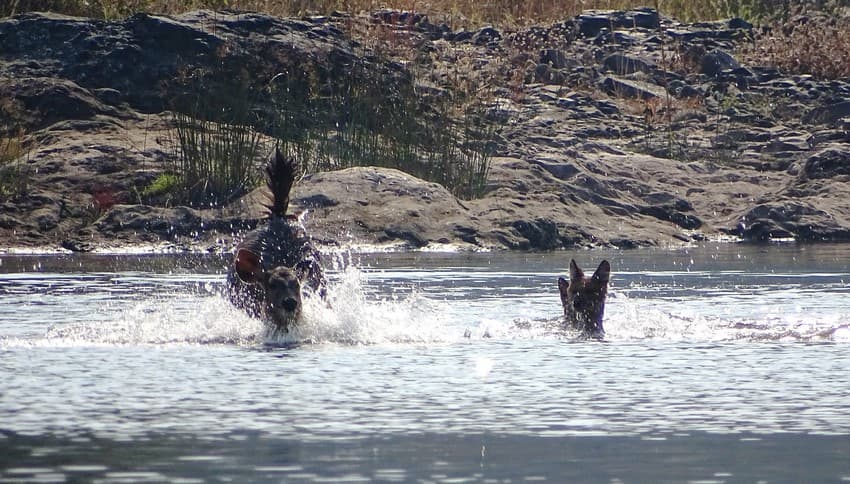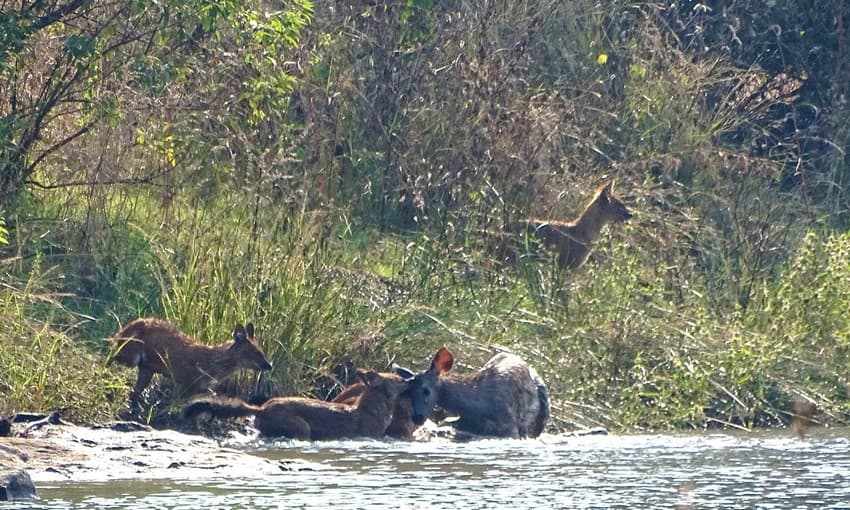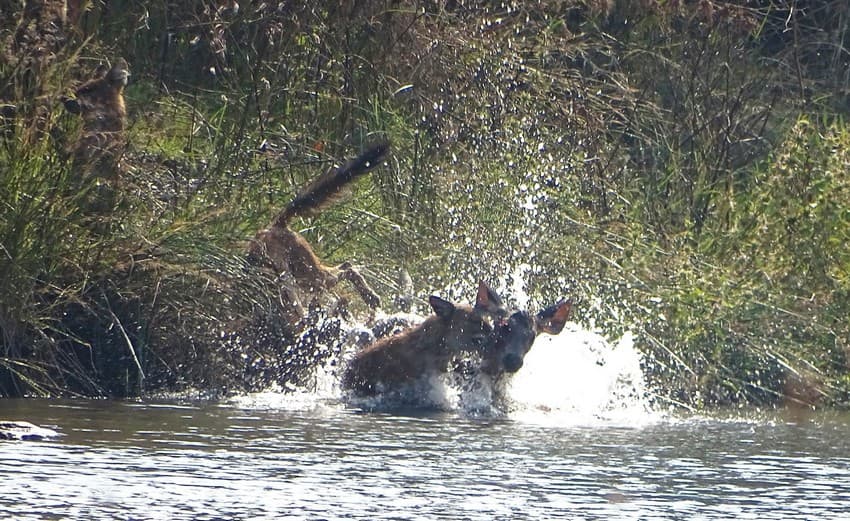We witnessed this during a large carnivore monitoring exercise conducted by the Wildlife Conservation Trust (WCT) in Dhargad, Melghat Tiger Reserve in Maharashtra. Two of my colleagues, Rajesh Bhendarkar and Amol, and I, left the field station in the morning for deploying camera traps. Just about a kilometre away was a rocky riverbed with small and large water pools. The news of a tiger frequenting this riverbed in the mornings was floating around among the forest guards and had reached our ears. As we neared the area, we slowed down our vehicle, looked along the riverbed in the hope of sighting the tiger, or even a leopard, if we were lucky. I suddenly caught some movement in a large water pool some distance away. I grabbed my binoculars to take a closer look and was delighted to see instead, a large pack of dholes engaged in a hunt. Their target, we realised, was a female sambar and her fawn standing in the middle of the pool surrounded by the whistling hunters! So as to not cause any distraction, we turned off the vehicle engine and quietly spectated.

Photo: Vikrant Jathar
Dholes are pack hunters and master strategists. They use the terrain and geographical features of the landscape to their advantage while hunting. It is also known that dholes tend to force their prey, especially sambar, into water as this restricts the movement of the prey and tends to tire them out faster, while also making it harder for the deer to kick and injure them. Today, we were witnessing a classic dhole hunt. Seven individuals blocked the bank while three pack-mates were taking turns to jump into the water and forcefully separate the fawn from its mother. Each time the dholes approached the fawn, the mother sambar would put herself between them and stamp her front legs aggressively pushing the dholes back on land. As soon as one group of dholes retreated, two or three more would replace them, repeating the same tactic. It took the dholes nearly 25 minutes to finally separate the fawn and the mother.

Photo: Vikrant Jathar
Four dholes stood taut blocking the mother any access to her fawn while three others started dragging the fawn towards the bank. Realising the futility of any more attempts to try and rescue her fawn, the distraught and exhausted mother sambar made a tough choice of leaving her offspring to its fate and vanished into the bushes adjoining the riverbank. As soon as the hunters and the prey were on the bank, the pack encircled the fawn and started eating it alive. Couple of them stayed alert and kept watch, probably for a tiger or leopard who are known to cash in on dhole hunts.

Photo: Vikrant Jathar
My colleagues and I grew emotional from hearing the helpless fawn wailing in agony as it was being devoured alive. We knew this was all a part of the natural cycle of life and death in the forests. Predators like the dholes were unconsciously fulfilling their ecological role by hunting prey animals, however ruthless it seemed to us. After 45 minutes of observation of this high-octane hunt, we decided to slink away and resume our work of installing camera traps in the area. We knew that the memory of this natural history event would stay etched in our brains forever.
Disclaimer: The author is associated with Wildlife Conservation Trust. The views and opinions expressed in the article are his own and do not necessarily reflect the views and opinions of Wildlife Conservation Trust.
Related Links
- An encounter with Wild Dogs – the Whistling Hunters of Bor WLS
- 22 amazing tiger facts – LetsTalkTigers
- Wildlife Week – Unfair Game – Big Cats Lose Prey to Bushmeat Hunters
- About Us
- Wildlife Crime: Prosecution Hurdles
